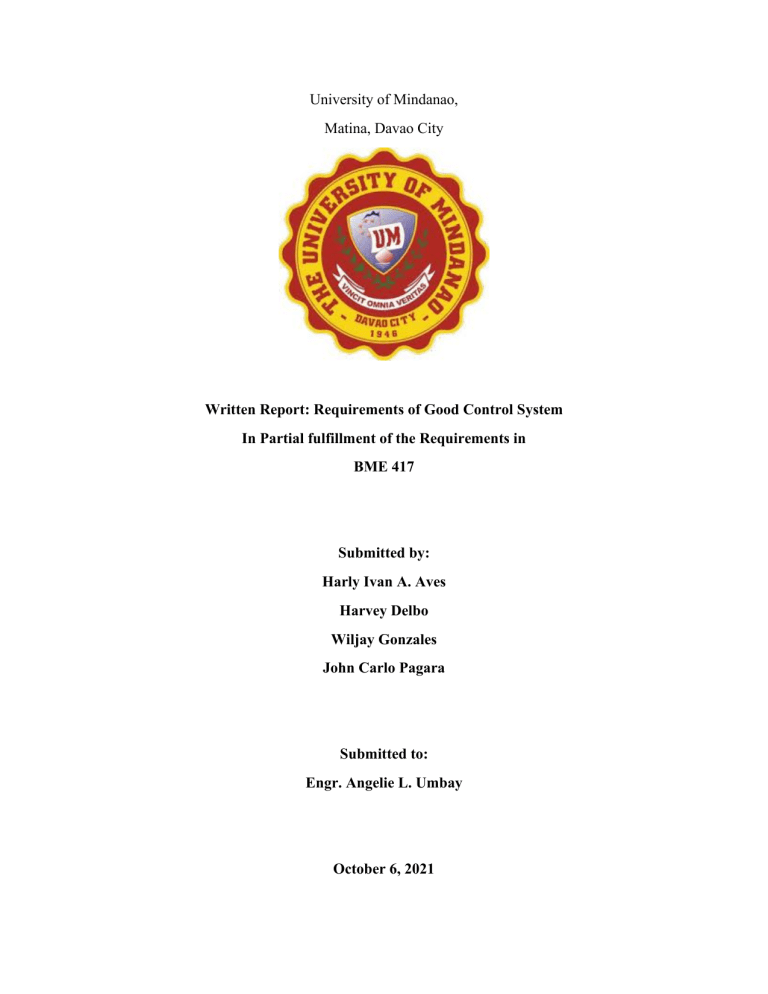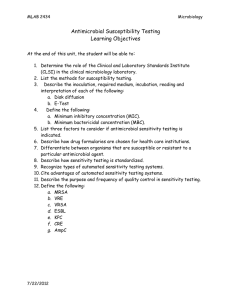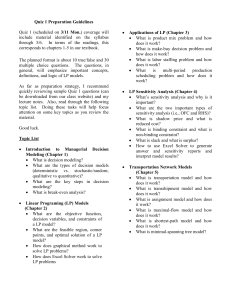
University of Mindanao, Matina, Davao City Written Report: Requirements of Good Control System In Partial fulfillment of the Requirements in BME 417 Submitted by: Harly Ivan A. Aves Harvey Delbo Wiljay Gonzales John Carlo Pagara Submitted to: Engr. Angelie L. Umbay October 6, 2021 Requirements of Good Control System A system is a collection of blocks that are linked together to perform a task or carry out a certain operation. In electronics, a system is defined as a set of electrical components that are linked together. This is also known as the control system. Each linked block or element in these control systems will have its own distinct output. The control system is also known as "the collection or set of devices that governs or manages the behavior of other systems." In heavy industries, for example, control systems (also known as industrial control systems) are used to control the manufacturing machines. Simply described, a control system is a system that governs another system by its output. There are several requirements for a system to be considered a good control system. They are detailed below. 1. Sensitivity - A control system's parameters are determined by its environment. They always alter when their circumstances change. The pace at which a control system changes in response to changes in its environment is referred to as "Sensitivity." A good control system should be responsive just to its input and not to the surrounding factors. Sensitivity is a measure of a system's reliance on the qualities of a single element. The differential sensitivity of a system's closed-loop transfer function H(s) to the properties of a particular element K(s) is defined as. C(s)/R = H(s) (s). It explains how feedback affects the disturbances. Disturbances with frequencies less than one are decreased by the distance to the critical point, whereas disturbances with frequencies more than one are amplified by the feedback. Advantages – High sensitivity is a necessary actor to individual elements in the control system in order for it to record quite good number of changes in the physical realm. This statement is true for some individual elements like controllers, sensors and measuring instruments. Disadvantages - However, when it comes to the sensitivity of a control system, the situation is exactly the reverse, because the sensitivity of a control system differs from the sensitivity of individual parts. A control system, as we know, is the integration of many separate parts such as a controller, control element, plant, sensors, and so on. As a result, the sensitivity of these individual parts should be high, but the sensitivity of the entire integrated system (control system) should be low. 2. Accuracy - Accuracy is the instrument's measurement tolerance and describes the boundaries of the errors caused when the instrument is utilized under typical working circumstances. The use of feedback components can help to increase accuracy. To improve the accuracy of any control system, an error detector should be included. 3. Stability - It is a crucial feature of the control system. If the input signal is bounded, the output must also be bounded, and if the input is zero, the output must also be zero, then the control system is said to be stable. 4. Noise - The undesired signal input that is occurred or added to input signal by external resources. A good control system should have the high noise tolerance value. This means it should be able to reduce the noise level. Advantages: Many unnecessary disturbances and noise signals from outside the system can be rejected. Disadvantage: The system is complicated by the increased number of components, such as sensors and error detectors. 5. Bandwidth - It is defined as the range of frequencies of a system. Bandwidth is decided by the operating frequencies. Advantages: The more data connection a bandwidth has, the more data it can send and receive at one time. Disadvantages: Technology advancement have made some bandwidth calculations more complex. 6. OSCILLATION – means the fluctuations of output of system or the constant oscillation of output of system. This oscillation will affect the stability of the system. Advantage – having a constant oscillation of output means you have a stable control system, or your device is running correctly. Disadvantage – if you don’t have a constant oscillation of output your control system will be unstable and your device has a problem. 7. SPEED – in control system, the time taken by the output to be stable is known as speed. High speed systems are considered as good control systems. The time taken by the output to reach its stable state is known as Transient state. ADVANTAGE – high speed in a control system is equal to good control system. If the control system has a high speed, it can process a command faster or it can produce an output for specific input signal faster. DISADVANTAGE – if you have a slow speed in a control system the input signal or the command will be process slowly or your device has a slow response. Conclusion: The advantage for a good control system in general would profit the whole system with regards to safety, productivity, and efficiency for a particular application. Therefore, from the above-mentioned parameters to look on to in order to secure a good control system, it must be checked on a constant basis. Through that, we can avoid unwanted complications to the whole system.




